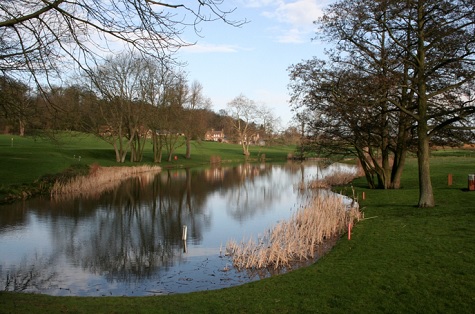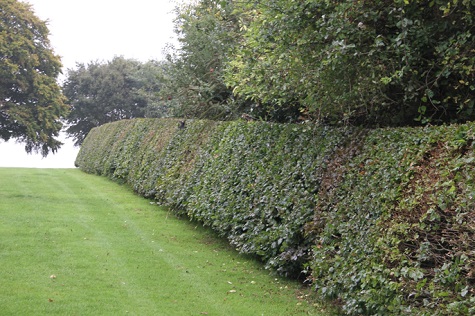What a great few weeks of rugby we have enjoyed during this year’s Autumn Internationals Series, with our home nation teams doing well against tough opposition - particularly the Irish and Welsh teams who beat those significant giants of rugby, New Zealand and South Africa.
However, the real winners for me were the stadium grounds teams who for four weeks on the bounce delivered excellent playing surfaces - no doubt helped by the investment in reinforced pitches, lighting rigs, hi-tech machinery and a robust feeding regime.
The combination of all these inputs have helped enormously, coupled with the dedication of the grounds teams who in the last few years have had to learn many new skills when using these new technologies.
This four-week fixture list is very challenging with so much activity going on between matches. Once the match has finished the grounds team then spend the next few hours cleaning up the pitch, hovering up surface debris, trying to get the sward to stand back up, before they then start the whole process of preparing the pitch for the next match.
Each and every stadium will have its own unique set of problems and issues to overcome between each fixture. For example I know one of the most problematic issues is the use of logos on the pitches. Speaking to Keith Kent at Twickenham, he says has soon as the game has finished, he will pro-core the whole pitch, and then get the logos washed off as quickly as they can. They then set up a mobile lighting rig to help dry out and encourage some regrowth on the logoed areas. It will then be a case of helping the grass recuperate and preparing the pitch for the next match.
After the Barbarian game, Keith and his team will have staged six international games, six captain’s runs and several warm ups on the hallowed turf of Twickenham, along with coping with over 25mm rain during the All Blacks Match. The combination of having a free draining sandy pitch profile coupled with tireless work of the grounds staff definitely helped the pitch cope with the heavy deluge of rain.
Which brings me on to discussing the benefits of carrying out effective aeration work during this time of the year. Most, if not all, soil based pitches will benefit from a regular programme of aeration work, or better still investing in some deeper tine and linear aeration work using either a verti-drain style punch aerator or alternatively using a linear deep blade aerator. Both can aerate to a depth of 220mm.
As for golf courses, this time of the year generally sees the start of the winter work programmes, usually centred around major drainage work, tee repairs, bunker repairs and ditch and pond cleaning. During my time working as a greenkeeper, I really enjoyed these jobs. You are able to learn new skills and get a lot of satisfaction in seeing the work completed.

Other works included a lot of tree management such as crown reducing / thinning and lifting. All a good excuse to have a fire and keep ourselves warm during the winter months.
Now is also the time to start planting trees and hedges, particularly planting bare root stock material which tend to be cheaper than containerised plants and trees. I personally believe we should encourage more planting of hedges.
Some hedgerows are so important that no amount of planting could replace them. The government has brought in legislation to protect hedgerows of key importance (currently in England and Wales only). Hedgerows provide food and shelter for many species. Because they often link small woods, they are essential protective corridors along which wildlife can travel.
Hedges may support up to 80% of our woodland birds, 50% of our mammals and 30% of our butterflies. The ditches and banks associated with hedgerows provide habitat for frogs, toads, newts and reptiles. Hedges are an excellent feature to plant, providing a wealth of benefits, acting as a wind break, barrier or screen.

The species of hedge has a big influence on the amount of clipping work. Some, such as privet, lonicera, cotoneasters, Leyland cypress and Monterey cypress are very rapid growers, capable of making a decent hedge in four or five years, but they also need most maintenance. Lonicera and privet may need clipping as often as four times each year in order to maintain a formal shape.
Slower-growing hedges, such as beech, yew, griselinia, thuya, lawson cypress, hawthorn, hornheam, berberis, olearia and holly hold their neat look with a single clipping each year.
For a neat, formal hedge you could use conifer, laurel (which has the added bonus of white flowers in spring), privet and beech or try holly or yew for their red berries. Box hedging has suffered considerably in some areas with box blight, so check your area carefully before planting this as an option.
For security, try thorny plants like hawthorn or berberis, which will have the bonus of flowers and berries.
You might think that hedges are an expensive option. This is not always the case; hedging plants can be bought very cheaply, especially when bought as bare root stock. Bare root material need to be planted between November and March.
To plant a bare root hedge, first clear the ground of weeds. Next, dig out a trench of about a spade depth and add well-rotted muck or compost to the soil at the bottom as this will give the hedge an excellent start and keep it going for many years to come.
The plants can be placed in the trench up to their original soil line, adding soil and incorporating bone meal (for root development) and a slow acting fertiliser. Plant at a distance of between 38-45 cm (15-18"), depending on the variety, and make sure they are well firmed in to avoid movement during winter wind and rain.
In an area where security or vandalism is a problem, a temporary fence can be erected alongside the hedge to help nurse it towards maturity, after which it may be taken down allowing the hedge to stand of its own accord.

Next time you are out walking, take the opportunity to admire our wonderful countryside and see for yourself the impact hedges have made over many generations. It now down to us to continue to properly manage these precious heritage landscape features for future generations to enjoy.